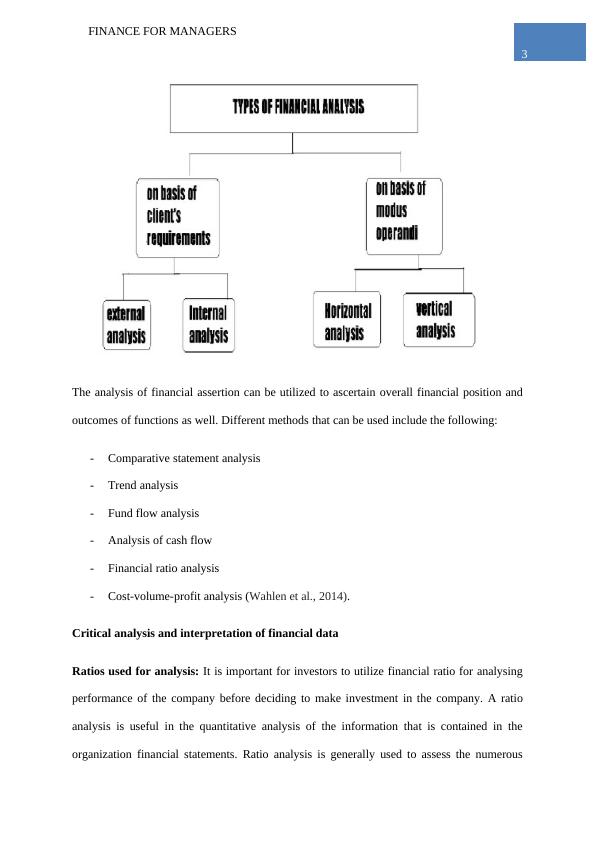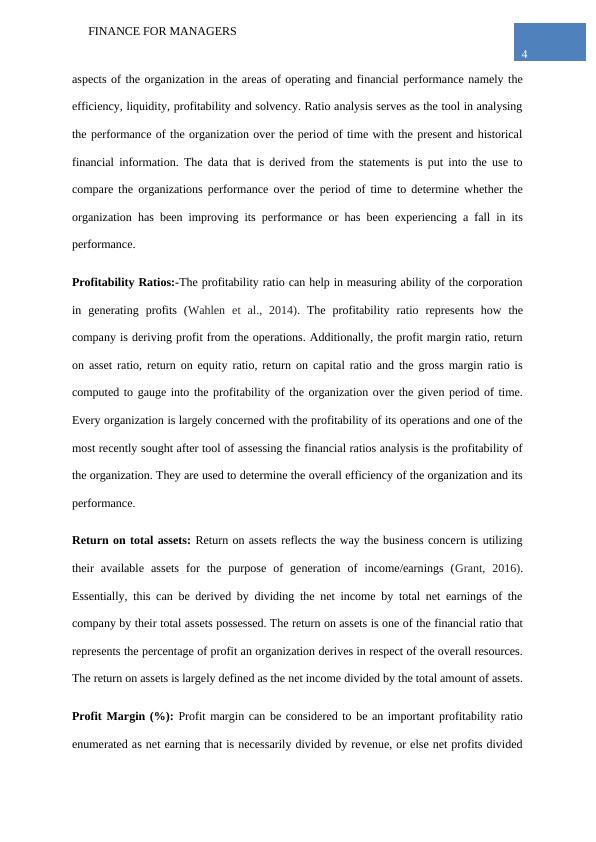Ask a question from expert
Paper on Theoretical Structure of Financial Instruments
16 Pages3678 Words348 Views
University of Chester
Added on 2020-05-28
Paper on Theoretical Structure of Financial Instruments
University of Chester
Added on 2020-05-28
BookmarkShareRelated Documents
Running head:FINANCE FOR MANAGERSFinance for managersUniversity NameStudent NameAuthors’ Note

2FINANCE FOR MANAGERSIntroduction The current study presents a theoretical basis of finance and hereby presents financialanalysis of the firm Cromwell Tools. The study presents a review of the financialperformance of the firm based on outcomes of key financial ratio. Moving further, the studypresents the threats as well as opportunities faced by the firm from the perspective of bothfinancial as well as non-financial measures. Thereafter, the study also presents ways ofresolving the detected threats of the corporation. Critical assessment and evaluation of theoretical basis of financeThe corporation mainly includes several interested parties such as owners, management,customers, suppliers, contenders, regulatory agencies, personnel and academics, everyonehaving their opinions in implementing financial statement evaluation in their analysis.Practitioners utilize financial ratios for instance, to estimate the upcoming success ofcorporations; whilst the researcher’s primary interest has been to develop models exploitingthe ratios. The current paper delivers a theoretical structure for the analysis of financial instruments ofthe corporation. Theoretical base associated to development and implementation of financialstrategy policy instruments in general and then attempts to deliver classification of pertinentinformation. The investigation of important finance theories includes discussion of differenttypes of financial evaluation that are mainly of two types: analysis based on requirements ofthe clients and analysis based on modus operandi. Based on requirements of the client,financial analysis includes external analysis and internal analysis. Again, based on modusoperandi, financial analysis includes horizontal analysis and vertical analysis (Wahlen et al.,2014)..

3FINANCE FOR MANAGERSThe analysis of financial assertion can be utilized to ascertain overall financial position andoutcomes of functions as well. Different methods that can be used include the following:-Comparative statement analysis-Trend analysis-Fund flow analysis-Analysis of cash flow-Financial ratio analysis-Cost-volume-profit analysis (Wahlen et al., 2014).Critical analysis and interpretation of financial data Ratios used for analysis: It is important for investors to utilize financial ratio for analysingperformance of the company before deciding to make investment in the company. A ratioanalysis is useful in the quantitative analysis of the information that is contained in theorganization financial statements. Ratio analysis is generally used to assess the numerous

4FINANCE FOR MANAGERSaspects of the organization in the areas of operating and financial performance namely theefficiency, liquidity, profitability and solvency. Ratio analysis serves as the tool in analysingthe performance of the organization over the period of time with the present and historicalfinancial information. The data that is derived from the statements is put into the use tocompare the organizations performance over the period of time to determine whether theorganization has been improving its performance or has been experiencing a fall in itsperformance. Profitability Ratios:-The profitability ratio can help in measuring ability of the corporationin generating profits (Wahlen et al., 2014). The profitability ratio represents how thecompany is deriving profit from the operations. Additionally, the profit margin ratio, returnon asset ratio, return on equity ratio, return on capital ratio and the gross margin ratio iscomputed to gauge into the profitability of the organization over the given period of time.Every organization is largely concerned with the profitability of its operations and one of themost recently sought after tool of assessing the financial ratios analysis is the profitability ofthe organization. They are used to determine the overall efficiency of the organization and itsperformance. Return on total assets: Return on assets reflects the way the business concern is utilizingtheir available assets for the purpose of generation of income/earnings (Grant, 2016).Essentially, this can be derived by dividing the net income by total net earnings of thecompany by their total assets possessed. The return on assets is one of the financial ratio thatrepresents the percentage of profit an organization derives in respect of the overall resources.The return on assets is largely defined as the net income divided by the total amount of assets.Profit Margin (%): Profit margin can be considered to be an important profitability ratioenumerated as net earning that is necessarily divided by revenue, or else net profits divided

End of preview
Want to access all the pages? Upload your documents or become a member.
Related Documents
LB5212 Accounting Assignment: Accounting & Finance for Managerslg...
|14
|2804
|54
Advanced Financial Accounting Assignment( AFA)lg...
|27
|5345
|208
Financial Statement Analysis Sample Assignmentlg...
|19
|4451
|375
15622051 Strategic financiallg...
|29
|8287
|39
Financial Decision Makinglg...
|12
|4013
|69
Identifying sources of finance available to business 4lg...
|20
|8190
|151